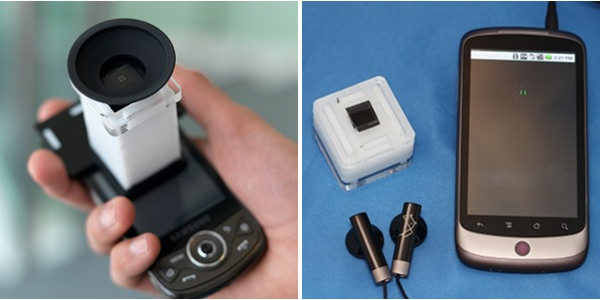How Smartphones Transform Diagnostic Medicine
We’ve explored how smartphones not only connect us to the digital world but also transform our physical well-being. After investing heavily in protecting our smartphones, it’s time to use them to protect our health with apps that keep us safe and healthy.
In this article, we’ll examine how the medical field is leveraging smartphones to detect health issues more efficiently and cost-effectively. These methods often use the smartphone’s built-in cameras and GPS features, or they rely on connectivity to send vital data to medical professionals for quick analysis.
This technological integration not only cuts healthcare costs but also enables the rapid detection of diseases. Such early detection can be crucial, potentially saving lives by facilitating timely treatment.
20 iPhone Apps to Keep Your Health in Check
As the tech savvy community that we are, we spend most of our time working in front of... Read more
Early Detection of Eye Cancer in Newborns
Red eye in photos is a common nuisance, often corrected by photo-editing apps. However, for Bryan Shaw, a photograph of his son with one red eye and the other milky white, initially dismissed as a simple camera flaw, led to a life-changing discovery.

Months later, Shaw’s son, Noah, was diagnosed with retinoblastoma, a rare eye cancer affecting about 8,000 children under five annually, with a mortality rate of 50%. The cancer, manifesting as a tumor at the back of the eye, shows up as a milky white reflection in digital photos, known as leukocoria or white-eye syndrome. Noticing the symptom in photos since Noah was 12 days old, Bryan realized earlier detection could have saved his son’s eye. Collaborating with doctors, Bryan published a study on how digital photos can detect leukocoria early in newborns.
Bringing Eye Care to Remote Areas with Mobile Clinics
With 90% of visually impaired individuals living in low-income countries, access to eye care is severely limited. Dr. Andrew Bastawrous aims to change this dynamic using the Peek app, enabling diagnosis directly in the patients’ homes.
Peek empowers healthcare workers to visit rural communities, conduct basic vision tests, and use smartphone cameras to scan eyes. These images are then sent to specialists for diagnosis. The patient’s identity and location are securely logged using the smartphone’s GPS features.

When a problem is detected, patients are located using Google Maps, retrieved, and transferred for treatment. This innovative approach is currently being tested with 5,000 individuals in Kenya, potentially offering a cost-effective solution to enhance eye care accessibility for millions.
Simple Tools to Detect Eye Conditions
The NETRA, a $2 clip-on eyepiece that attaches to any smartphone, works alongside EyeNetra, an app designed to identify a range of vision issues including farsightedness, nearsightedness, and astigmatism. This affordable tool helps determine the need for glasses, bypassing the bulky traditional equipment usually required.

Users peer through the eyepiece and adjust alignments on the smartphone screen by clicking buttons, determining refractive errors based on the number of adjustments needed.
Fundus Photography Made Accessible
Traditionally, equipment for capturing fundus photography – images of the eye’s interior – costs a fortune. Researchers from the Massachusetts Eye and Ear Infirmary have revolutionized this with a method using an iPhone 4 or 5. Their study demonstrates how, with an app called FiLMiC Pro and a couple of lenses, high-quality fundus images can be captured even in suboptimal conditions, drastically reducing costs and making it easier for ophthalmologists to adopt.
Monitoring Health with Smartphones
The widespread ownership of smartphones has opened up new possibilities for monitoring health conditions. Several apps developed by researchers now allow users to track specific health issues effectively.
Monitoring Vision at Home
The FDA-approved myVisionTrack app allows individuals with degenerative eye diseases to monitor their condition from home. It employs “shape discrimination tests,” which are more precise than traditional Snellen Charts used in clinics. Results can be conveniently shared with eye doctors without needing an in-person visit.
Detecting Kidney and Diabetes Conditions
UCLA researchers have developed a device that uses a smartphone to analyze albumin levels in urine, crucial for diabetes and kidney damage management. The process, which involves a fluorescent dye and light analysis, can be completed in just 5 minutes, offering a quick, affordable testing method.

Diagnosing Urinary Diseases
The Uchek app enables detection of up to 25 different urinary diseases by analyzing a color-coded strip immersed in a urine sample. This affordable, simple method also helps detect conditions like diabetes and urinary tract infections.
Conclusion
These innovative apps exemplify how smartphones can be used beyond traditional communications, helping detect and monitor diseases at home. While they are not replacements for professional medical advice, they provide valuable data that can lead to better and more timely medical interventions.